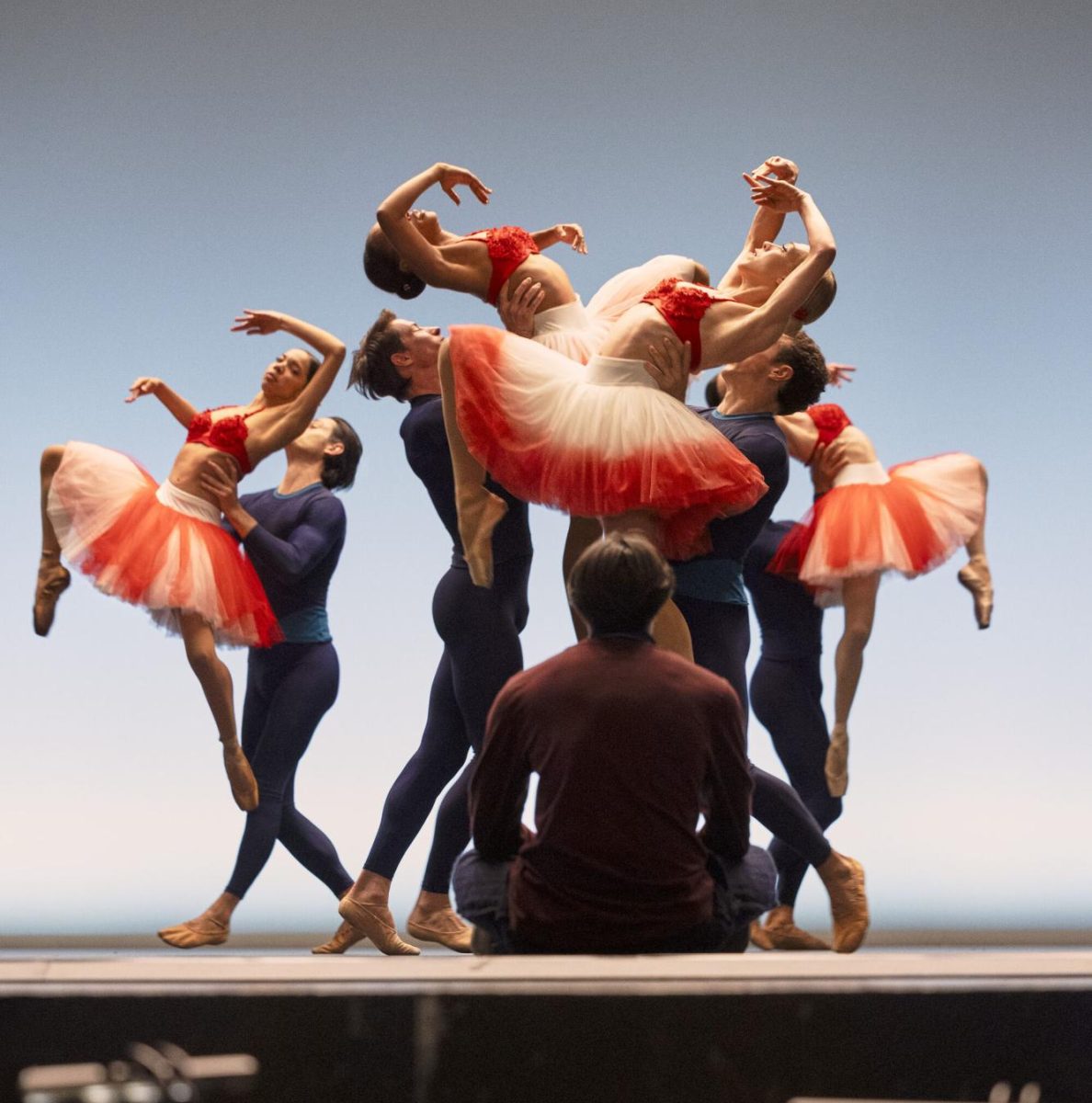
Philippe Antonella/Prime Video/TNS
“Étoile” — which means star or a ballet company’s principal dancer in French — is Amy Sherman-Palladino’s newest entry into a world of fast-talking, personality-filled characters. The “Gilmore Girls” and “The Marvelous Mrs. Maisel” creator steps into a different setting, as the series follows two ballet companies: one in New York, led by Jack (Luke Kirby), and one in Paris, led by Geneviève (Charlotte Gainsbourg). Amid drama among the dancers and a lack of audience for concerts, the heads of both companies decide to switch their top performers, staging fresh faces to draw more crowds.
In the first 10 minutes of the series’ first episode, Jack reads a review of his ballet: “Despite promising stars and well-placed intentions, the reimagined piece proved low on actual imagination.” It’s an intriguing starting point because it makes the viewer wonder if the series itself is doomed for the same fate. The stakes are raised very quickly by Geneviève, who suggests the swap. It feels rushed; there is not that much set-up for the swap and it reads as too much exposition early on. Yet, the story becomes more about these new circumstances rather than why they were set up in the first place.
The pacing is confusing because the initial set-up is paid off early, since the first switched performances take place in the middle of the eight-episode season. What this story is more concerned with is moving around ballet; storytelling comes second. The dancing in the series is stunning and enchanting. Its authenticity lies in the feeling ballet evokes. If the dances were not captured so beautifully, everything else falls apart. Sherman-Palladino’s investment in the world of ballet is clear on the screen.
Following “The Marvelous Mrs. Maisel” and its defining leading lady, it is surprising to see how “Étoile” does not seem to know who its own étoile is. There is a rich ensemble at play, with supporting cast members that stretch from the New York company’s heartwarming artistic director, Nicholas (David Haig), to the artists who move from Paris to New York in the swap. Eccentric choreographer Tobias (Gideon Glick) gets a beautiful romantic arc, as does estranged daughter Mishi (Taïs Vinolo), who returns to Paris after being cut from the program.
Within the three leads — Geneviève, Jack and Cheyenne (Lou de Laâge) — it’s hard to pinpoint who’s leading and, consequently, who the show should focus more on. Laâge is a comedic delight who fully embodies Cheyenne — chosen in the swap to move to New York — as a gifted étoile but rude person. Mentoring a young ballerina plays a poignant role in her arc as it allows for her tough shell to dissolve and her connection to ballet to flourish. Geneviève and Jack drive their respective companies with passion, but they don’t often drive the plot forward.
Sherman-Palladino’s direction style, which has developed since she started working with a bigger budget in “The Marvelous Mrs. Maisel,” is all over this series. Tracking shots with stunning on-location cinematography especially shine in any dance sequence or while capturing the architecture of Paris and New York. In terms of her storytelling style, dialogue is quick and, most importantly, sharp; these characters know how to keep each other on their toes. As for the genre, it is as dramedy as it gets. It may start off as an absurd camp comedy, but it finds dramatic undertones as the season goes on. To capture all of this with as much dialogue in French as there is in English in a high-budget and high-profile series like this, is an admirable step into embracing international television from a known American showrunner like Sherman-Palladino.
The most interesting aspect of the series is made clear in the season finale. They finally return to the initial reason for the Paris/New York swap, which is the lack of demand for the art they love to make. The season’s conclusion perfectly demonstrates the value of embracing accessibility of ballet. A performance in the Paris company is interrupted by Tobias, who starts rechoreographing the dance, while being livestreamed across the world. Geneviève puts the livestream in front of the building, causing many Parisians to stop and take notice of the ballet taking place.
“Étoile” could be a tale of cheering on talented dancers and choreographers to succeed, but they’re already immensely successful. So, what comes next? That is what “Étoile” is about: figuring out how to keep art alive and moving forward in current times while showing how dancers and choreographers deal with failure and success.
Fortunately, “Étoile” was picked up with a two-season order, so viewers should be seeing more of how the series explores the ever-changing world of dance. The finale suggested the swap will last longer than expected, which is intriguing and sets up season two, especially because many dynamics are still yet to be explored in the ensemble as the characters shift between the two main locations. Hopefully, the story will soon find its étoile, but as the finale seemed to promise, maybe the story is more set on the stars’ new love interests and furthering their development through that.